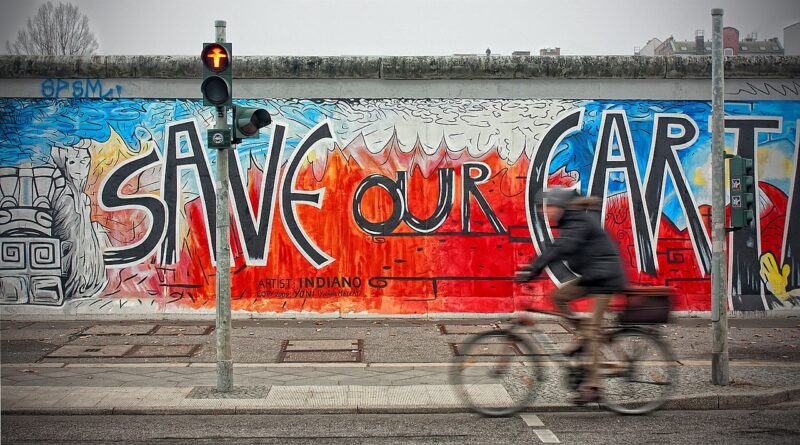
The Berlin Wall stands as one of the most potent symbols of the Cold War and the division of Europe in the 20th century. Rising to divide East and West Berlin from 1961 to 1989, its impact was felt far beyond its physical structure, symbolizing the struggle between freedom and oppression. This article aims to explore the historical context, key events, and personal stories that define the Berlin Wall’s legacy.
1. The Roots of the Division
After World War II, Europe lay in ruins and was divided into spheres of influence. The Allied Powers—United States, United Kingdom, France, and the Soviet Union—agreed to partition Germany into four zones of occupation. Berlin, located deep in the Soviet zone, was similarly divided. Initially, this arrangement aimed to rebuild Germany and encourage democratic governance. However, ideological differences between the West and the East led to rising tensions.
By the late 1940s, the West, including West Germany (the Federal Republic of Germany), embraced capitalism and democracy, while East Germany (the German Democratic Republic) fell under Soviet influence, adopting a communist regime. This ideological divide created a significant socio-economic gap.
The situation escalated as East Germans increasingly fled to the West, seeking freedom and better living conditions. By 1961, approximately 3.5 million East Germans had escaped to the West, leading to a crisis in the East.
2. The Construction of the Wall
On the night of August 12-13, 1961, the East German government, with the backing of Soviet leader Nikita Khrushchev, decided to erect a physical barrier to stem the tide of emigration. The Berlin Wall was born as hundreds of soldiers and workers began constructing barbed wire fences, concrete walls, and watchtowers, effectively sealing off East Berlin from the West.
The suddenness of this action shocked the world. Families were torn apart, and lives were upended as people who had previously traversed the city freely found themselves imprisoned by an impenetrable wall. “Today, the Wall goes up. Tonight, the border is closed!” proclaimed a leading newspaper, capturing the gravity of the event.
As the Wall arose, East German authorities justified it as a necessary defensive measure against the supposed threat of Western fascism. Yet, it also served as a clear reminder of a government desperate to maintain control over its population.
3. Life Behind the Wall
Life in East Berlin under the watchful eye of the Wall was nothing short of oppressive. Citizens faced severe restrictions on travel, expression, and access to information. The Stasi, East Germany’s secret police, monitored the populace relentlessly, creating an atmosphere of fear and suspicion.
In contrast, West Berlin flourished, showcasing a vibrant economy and culture, which further fueled discontent in the East. Citizens attempted various forms of resistance against the oppressive regime, from smuggling information and goods to organizing protests.
Throughout the Wall’s existence, there were numerous attempts to escape, with over 5,000 documented successes. These daring escapes came in various forms: hiding in empty barrels, creating fake identities, or using hot air balloons. Nevertheless, the escape attempts were fraught with danger, as attempting to cross the border often resulted in imprisonment or death.
The Wall became more than a physical barrier; it was a psychological one too, representing the loss of freedom and separation between families and friends.
4. The Fall of the Berlin Wall
The turning point for the Wall came during the mid-1980s, as movements for reform surged across Eastern Europe. Under the leadership of Mikhail Gorbachev, the USSR’s policies of **glasnost** (openness) and **perestroika** (restructuring) inspired change within East Germany.
Mass protests broke out, calling for freedom and the dismantling of the Wall. On November 9, 1989, following weeks of escalating demonstrations, East German authorities announced that citizens could cross the border freely. As news spread, thousands flocked to the Wall, eager to reunite with family and friends.
**”It’s your decision!”** exclaimed the official, signaling the end of an era. Overwhelmed with joy, crowds began climbing atop the Wall and knocking down its concrete bricks. The East and West Berliners celebrated together, dancing and singing, marking the triumph of unity over division.
5. The Aftermath: Reunification and Legacy
The fall of the Berlin Wall ushered in a new era of reunification for Germany, officially completed on October 3, 1990. The aftermath, however, presented its own challenges. Integrating two vastly different systems created economic difficulties and social tensions that lingered for years.
Today, remnants of the Berlin Wall can be found throughout the city, serving as a somber reminder of the past while symbolizing hope for unity and resilience. Sites like the Berlin Wall Memorial and East Side Gallery celebrate the stories of those affected by the Wall and commemorate the spirit of a city that refused to be divided forever.
The Berlin Wall remains significant in modern discourse, reminding us of the necessity of vigilance against oppression and advocating for peace and freedom. It serves as a testament to the human spirit’s resilience, embodying a journey from division to unity.
Conclusion
The story of the Berlin Wall is one of struggle, resistance, and ultimate triumph. It reflects the enduring human desire for freedom and the lengths individuals will go to obtain it. As we continue to celebrate the legacy of the Berlin Wall, let us remember the lessons it teaches and honor the sacrifices made by those who yearned for a united city—their story will never be forgotten.








